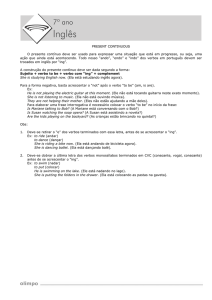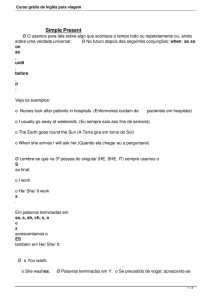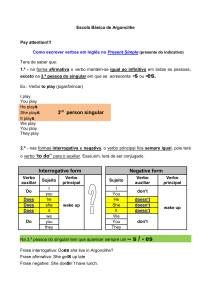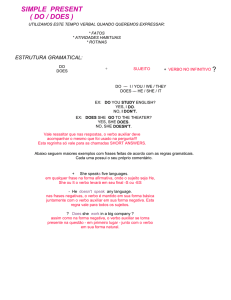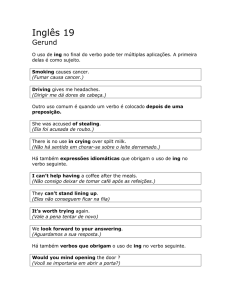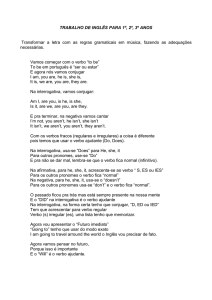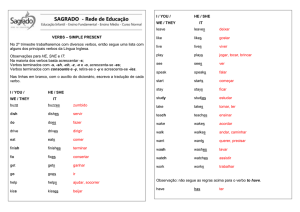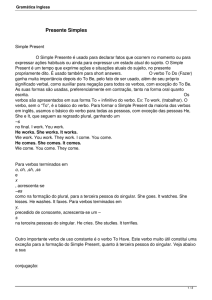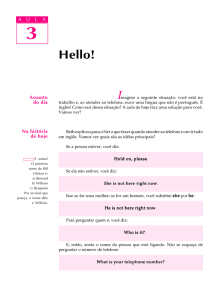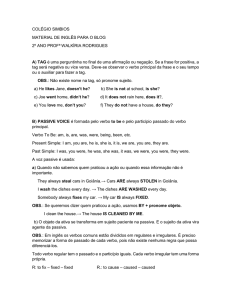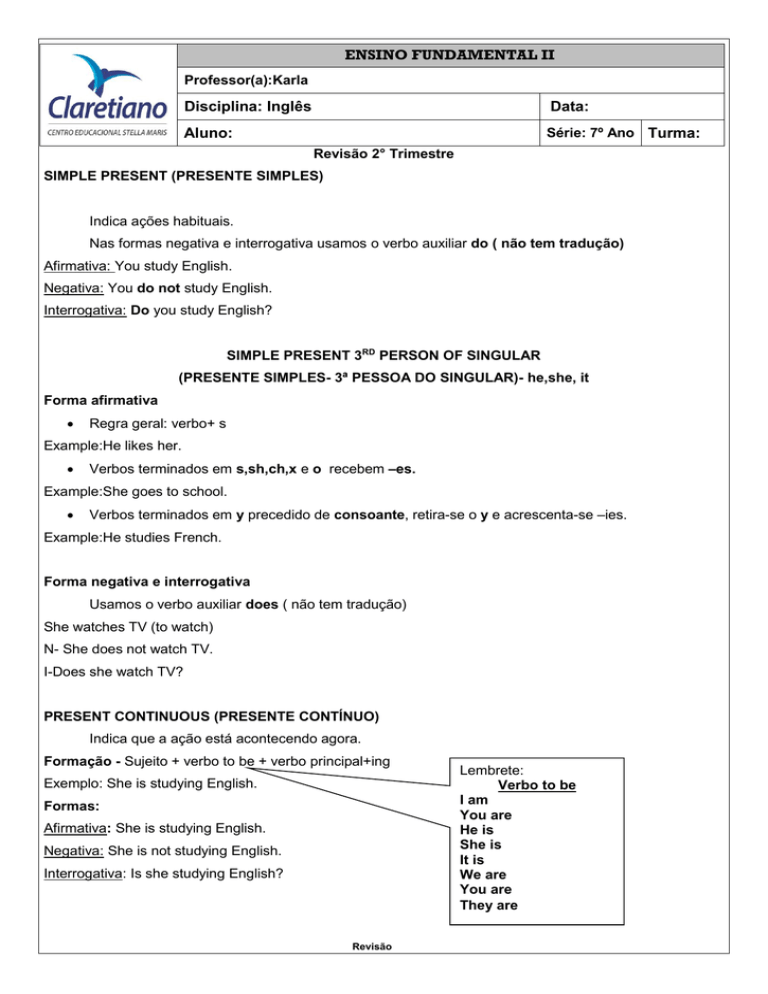
ENSINO FUNDAMENTAL II
Professor(a):Karla
Disciplina: Inglês
Data:
Aluno:
Série: 7º Ano Turma:
Revisão 2° Trimestre
SIMPLE PRESENT (PRESENTE SIMPLES)
Indica ações habituais.
Nas formas negativa e interrogativa usamos o verbo auxiliar do ( não tem tradução)
Afirmativa: You study English.
Negativa: You do not study English.
Interrogativa: Do you study English?
SIMPLE PRESENT 3RD PERSON OF SINGULAR
(PRESENTE SIMPLES- 3ª PESSOA DO SINGULAR)- he,she, it
Forma afirmativa
Regra geral: verbo+ s
Example:He likes her.
Verbos terminados em s,sh,ch,x e o recebem –es.
Example:She goes to school.
Verbos terminados em y precedido de consoante, retira-se o y e acrescenta-se –ies.
Example:He studies French.
Forma negativa e interrogativa
Usamos o verbo auxiliar does ( não tem tradução)
She watches TV (to watch)
N- She does not watch TV.
I-Does she watch TV?
PRESENT CONTINUOUS (PRESENTE CONTÍNUO)
Indica que a ação está acontecendo agora.
Formação - Sujeito + verbo to be + verbo principal+ing
Exemplo: She is studying English.
Formas:
Afirmativa: She is studying English.
Negativa: She is not studying English.
Interrogativa: Is she studying English?
Revisão
Lembrete:
Verbo to be
I am
You are
He is
She is
It is
We are
You are
They are
Verbs + ing
1. Verbos monossilábicos terminados em consoante, vogal, consoante dobram a consoante final para receber
o –ing.
Exemplo: To swim- swimming
2. Verbos terminados em –e perdem o –e e recebem –ing.
Exemplo: To write- writing
Personal Pronouns- Pronomes Pessoais
Subject Pronouns
São usados como sujeito
I- Eu
You- você
He- ele
She-ela
It-ele/ela( animal ou “coisa”)
We (nós)
You( vocês)
They(eles/elas)
Object Pronouns
São usados como objeto
Me
You
Him
Her
It
Us
You
Them
Bob likes Lisa
He likes her.
Lisa likes Bob
She likes him
Revisão

